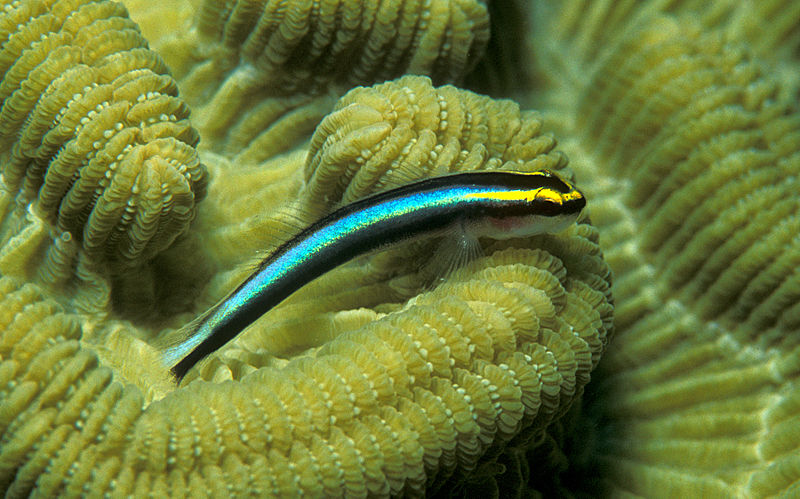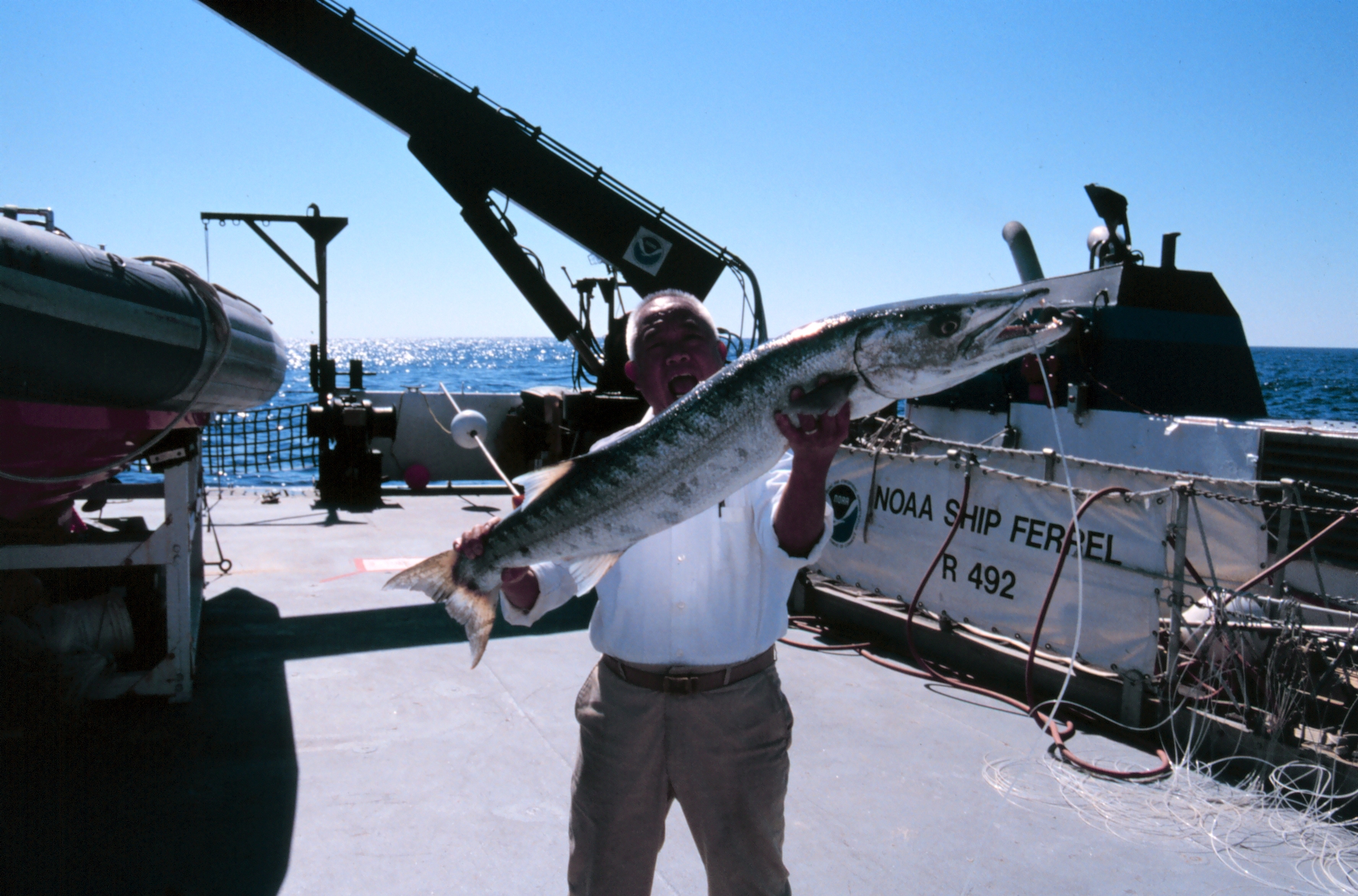|
|
|
Interactions |
While barracuda
frequently interact with many fish species as a
predator, they engage
in several other types of interactions that are less well known.
The great barracuda spends much of its
life just floating in
the water, but during this time it is taking part in a mutualistic
relationship with a little fish known as the cleaner wrasse (shown in
the image at the right).The
barracuda sits in the water with its mouth partly open and its gills
flared to allow the wrasse to eat off dead skin and parasites. This
relationship could even be considered obligate mutualism because without
the wrasse, the barracuda's gills would be clogged with dead skin and
without the barracuda, the wrasse would have no source of food. parasites. This
relationship could even be considered obligate mutualism because without
the wrasse, the barracuda's gills would be clogged with dead skin and
without the barracuda, the wrasse would have no source of food.
Many people wonder if this fierce predator also takes bites
out of humans. Although there have been several barracuda attacks on
humans, for the most part these creatures do not strike unless provoked.
In reality, habitat destruction by humans poses a greater threat to the barracuda than it does
to us. The one main danger associated with the great barracuda is ciguatoxin, a toxin commonly found in barracuda flesh, which causes
human ciguatera fish poisoning. The effects of poisoning are
gastrointestinal, neurological, and cardiac symptoms; sometimes these
neurological symptoms can be very strange, such as the reversal of hot
and cold sensations. The suspected cause of ciguatoxins is a
dinoflagellate species, Gambierdiscus toxicus, which releases
toxins that are bioaccumulated so that the highest concentration of toxins
is found in the highest trophic levels, namely, the great barracuda.
Barracuda were once sought after for their meat, but consumers are now
strongly cautioned not to eat barracuda because of the health problems
that are associated with ciguatoxins. Barracuda have been used in
research studies dealing with these toxins and have proved very helpful
in tracking and understanding ciguatoxin. Increasing studies will allow
us to better detect toxic areas and to improve the management and
treatment of human ciguatera fish poisoning.

Click to see the resources used for this
web site and to read about the author!
|
|

